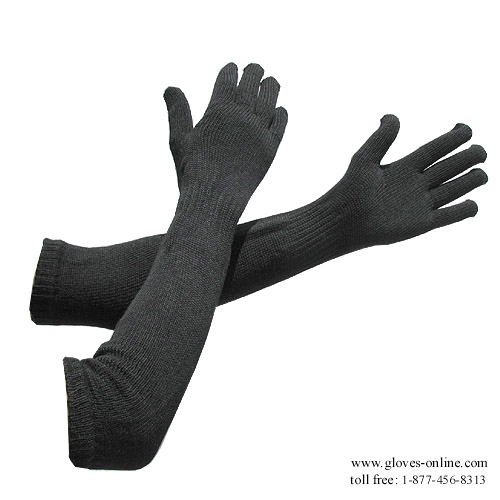It’s
that time of year again… so this post should be timely for those that work
outdoors.
This is a very helpful guide for selecting the best High
Visibility Gloves for your particular need and conditions. These
recommendations are based on over 2 decades of experiences in selling Hi-Vis
Work Gloves and assisting customers in fulfilling their specific needs with
their specific work conditions.
The good news is that we offer a wide variety and range
of Hi-Vis Work Gloves that meet most any requirement, weather and temperature
conditions, wet environments, day and night time conditions. We also have
Hi-Vis gloves that also meet heavy-duty work conditions or light weight, normal
work conditions.
Having said all that, I’ll break things down at make it
simpler and easier to match up the gloves to the various conditions. I’ll
present them in a step by step manner which should help make it easy to find a High
Visibility glove model ideal for your work.
Although some of these points may seem to be very
obvious, the options should make a good check list for you so that you don’t
overlook a condition or option before purchasing a new pair of Hi-Vis gloves.
Color
– Safety Orange or Lime
According to safety standards, the color does not make
any difference and more a matter of personal choice. Both the traditional
orange and the newer hi-vis lime colors work identically. The lime color was
initially introduced in Europe and the thought was to stand out better than the
traditional common orange color. I’m told that people became less alert to
seeing the orange color as a potential safety hazard but I believe that when
people see hi-vis colors they notice them whatever the color.
I’m sure that there are people out there that may
disagree with me but the ANSI/ISEA 107-2015 High Visibility Standard does that
make any preference to color other than the intensity and reflective capability
is the benchmark.
Day
Time or Night Time
I know for a fact that customers overlook the time of
day when they will use hi-vis gloves but this is a primary safety selection
issue. For example, many customers fail to realize that some hi-vis gloves will
only be effective during day light hours while other hi-vi gloves will work in
both day time and night time.
First, it is important to know that Nighttime
Hi-Visibility Gloves contain retro-reflective patches or elements within the
gloves that will reflect back light beams to the source such as automobile
headlights. These patches are easily identified since they are normally a
glossy colored material or shiny silver metallic material.
Warm
Weather or Cold Weather
This is an obvious issue but, again, often overlooked
by customers. Some Hi-Vis gloves are suitable for both types of weather
depending on the temperature ranges but this is primarily a comfort issue
verses a safety issue. Look for lined or thermal models in cold conditions. We also
have some nice breathable mesh back models or knit models for warm weather.
Wet
Conditions
Police, Traffic Control, Highway Workers, and
Construction personnel frequently find themselves working in rainy weather.
Consider using High Visibility Moisture or Waterproof Gloves. They do exist and
you will find them a useful in these wet conditions.
You may notice that the most popular Hi-Vis Leather
Gloves are made of Pigskin. There is a very logical reason for this. First,
Pigskin is very dense and more durable than Cowhide so they usually last
longer. They are not much more durable than Cowhide but enough to make them
stronger.
The main reason that the Pigskin High Visibility Gloves
are more popular is due to the fact that they are principally used outdoors and
in wet conditions. Therefore, since Pigskin remains soft when they dry out
after being wet, they are the best option in wet conditions. You should note
that as nice as cowhide is, it becomes hard when it dries out after being wet.
This will reduce the life, flexibility, and comfort with cowhide models in a
wet environment.
We also have a Cryo Hi-Vis glove model which is both
liquid proof and withstands freezing conditions. These are popular with
aircraft signalers, crossing guards, and commercial fishermen.
Durability
– Heavy Weight and Light Weight models.
There is not much that I can say on this topic since it
is obvious which model may be more durable than another. All of the Leather
Palm models are the obvious choice for rugged conditions. We also have a new
Hi-Vis model that is also cut resistant and impact resistant which is a nice
glove.
The light weight models are also popular with parking
attendants and we have a few nice options there.
Below are seven (7) examples of the High Visibility
Gloves that I’ve mentioned. We currently carry 16 different Hi-Vis Glove models
so I won’t list them all in this post. However, you can see all of these models
at this link:
High Visibility Gloves
Examples:
Shown is our WK-1938 Lined
Pigskin Model which also available in Lime Green.
______________________________________________________________________________
Shown is our WK-HVO990K
Drivers Gloves
______________________________________________________________________________
Shown is our WK-C874FY
Maxiflex Coated Gloves
______________________________________________________________________________
- Daytime & Nighttime Model Example
Shown is our WK-1919 Model
– Note the Retro-Reflective Strips which can be found on other models.
______________________________________________________________________________
Shown is our WK-908 Mesh Back Leather Gloves which is
also available on Orange.
______________________________________________________________________________
- Cold Weather Model Example
Shown are our WK-41-1400
POWERGRAB Thermal Grip Gloves which are also available in Lime Green.
______________________________________________________________________________
- Water Resistant Model Example
Shown is our WK-1938KWP
which are a Lined Waterproof Pigskin Model with a Knit Wrist to keep out cold
air.
Please let me know if you have any questions and thank
you for subscribing.
The Glove Guru
Joe McGarry


























